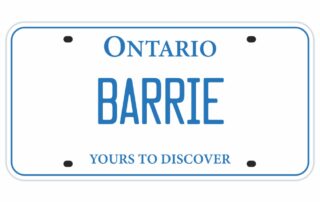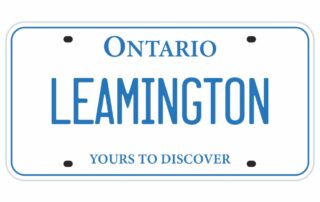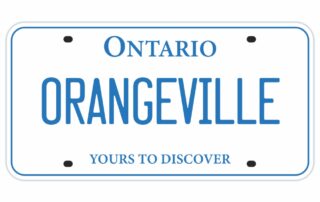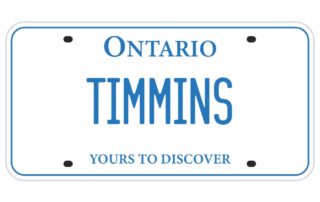When Collaborative Divorce Fails

The collaborative divorce process is often touted as a more amicable approach compared to traditional divorce litigation. It involves both parties and their divorce attorneys working together to reach a settlement agreement. However, there are times when the collaborative divorce process fails. This article explores the challenges, strategies for moving forward, emotional impact, and reasons behind the failure of the collaborative divorce process.
Understanding the Challenges of Collaborative Divorce
Collaborative divorce isn’t without its hurdles. Communication breakdowns, disagreements over child custody, financial disputes, and lingering emotional issues can all derail the process.
Poor communication is a frequent challenge. Despite the collaborative practice’s emphasis on open dialogue, misunderstandings can occur, leading to tension and stalled proceedings.
Child custody disagreements are another stumbling block. Both parties may have differing views on custody arrangements, complicating the collaborative family law process. Reaching a solution that benefits the children and satisfies both parties can be difficult.
Financial matters, such as asset division and spousal support, can also be contentious. Different financial goals and expectations can hinder the collaborative process.
Lastly, unresolved emotional baggage can affect the proceedings. Emotions like anger and resentment can make rational negotiations difficult, prolonging the process and making a divorce agreement elusive.
Table of Contents
Strategies for Moving Forward
If the collaborative divorce process fails, it’s essential to explore other options. Mediation is one such alternative. In the mediation process, a neutral third party facilitates negotiations.
However, mediation isn’t suitable for all situations. In cases where trust and communication have severely eroded, other dispute resolution methods like arbitration or court process may be necessary.
Arbitration involves hiring a neutral arbitrator to make a binding decision. It’s more formal than mediation but offers closure. On the other hand, taking the case to court involves a judge making decisions on divorce-related issues like child custody and asset division. While more expensive and time-consuming, litigation may be the only option left.
Emotional Aftermath of a Failed Collaborative Divorce
The emotional toll of a failed collaborative divorce can be significant. It’s crucial to acknowledge these feelings rather than suppress them. Family therapists or counsellors can provide emotional support and coping strategies. Support groups for those who have experienced a failed collaborative divorce can offer comfort and advice.
Examining the Reasons for Failure
Understanding why the collaborative divorce process failed can offer valuable insights. Poor communication, unmet expectations, and unresolved conflicts are common culprits. Reflecting on these can help make informed decisions for future attempts at collaborative divorce or other family law practice methods.
What to Do When Collaborative Divorce Fails
Collaborative divorce has become a popular alternative to traditional divorce litigation. However, many wonder what happens next when the collaborative divorce process fails. This article outlines steps to navigate the aftermath and work towards a resolution.
Consult a Litigation Specialist
If collaborative divorce fails, consider hiring a new lawyer specializing in litigated divorce. This legal expert can review your case, pinpoint why the collaborative process failed, and guide you through the court process. They can also help you understand the potential outcomes and steps in shifting from a collaborative approach to litigation.
Explore Alternative Dispute Resolution
Litigation shouldn’t be your first option. Before resorting to court, explore other dispute resolution methods like negotiation or the mediation process. Open dialogue can help reach a settlement agreement that satisfies both parties, avoiding the time and expense of a court battle.
Protect Your Legal Rights
If a settlement proves elusive and litigation becomes inevitable, take steps to protect your legal rights. Gather important documents like financial records and custody agreements. Consult your new lawyer to develop a robust legal strategy, ensuring you’re well-prepared for the complexities of family law practice in court.
Build a Support Network
The emotional toll of a failed collaborative divorce can be significant. Build a support network of trusted friends, family, and professional team members. This network can offer emotional support and practical advice, helping you regain resilience and strength.
Conclusion
While collaborative divorce offers many benefits, it can fail. Knowing what to do when the collaborative process fails is crucial. By being proactive, seeking legal advice, and considering alternative dispute resolution methods, you can navigate the aftermath and work towards a brighter future.
Common Reasons for Collaborative Divorce Failure
Collaborative divorce aims to foster cooperation and compromise. However, challenges can arise, causing the collaborative divorce process to fail. Understanding these pitfalls can help you navigate the divorce process more effectively.
Communication Breakdowns
Effective communication is crucial in any collaborative effort. When couples struggle to communicate or engage, it hinders progress. Misunderstandings and lack of clarity can lead to a breakdown in negotiations.
To avoid such issues, establish clear communication rules from the start. Creating a respectful environment and practicing active listening can help overcome these challenges.
Inadequate Preparation and Planning
Collaborative divorce requires thorough preparation. Failing to gather essential documents or consider all divorce-related issues can create roadblocks. Adequate preparation enables informed decisions and smoother negotiations.
Misaligned Expectations
Unrealistic expectations are a common reason collaborative proceedings fail. Collaborative divorce is a challenging fix; it requires time and effort. Setting realistic expectations from the outset can help manage disappointments and increase the likelihood of a successful outcome.
The Impact of Failed Collaborative Divorce
Emotional Consequences
Divorce is emotionally challenging; a failed collaborative effort can worsen these difficulties. The breakdown of trust and failed expectations can lead to emotional distress. Prioritizing emotional well-being and seeking professional support can aid in healing.
Financial Implications
Failed collaborative divorces can be costly. If you can’t reach an agreement, you may have to proceed with traditional methods, increasing costs. Understanding the potential financial impact is crucial for effective planning.
How to Avoid a Failed Collaborative Divorce
Choosing the Right Professionals
Selecting experienced professionals is crucial for a successful collaborative divorce. Research and interviews can ensure compatibility and establish trust.
Maintaining Open and Honest Communication
Open dialogue is vital. Regularly scheduled meetings and ongoing communication help maintain progress and prevent misunderstandings.
Setting Realistic Expectations
Realistic expectations are crucial to avoiding disappointment. Understanding that compromise is essential can help you approach the process with a practical mindset.
How to Terminate a Collaborative Divorce Immediately
Steps to Terminate a Collaborative Divorce
- Consult Your Lawyer: Discuss your reasons and understand the legal implications.
- File Paperwork: Your attorney will help you file the necessary documents.
- Coping with the Aftermath: Emotional and financial challenges may arise. Seek professional help as needed.
In conclusion, terminating a collaborative divorce is a significant step. It’s crucial to consult with a knowledgeable attorney to navigate this complex process effectively.
Transitioning to Mediation After Collaborative Divorce Fails
When a collaborative divorce process fails, it’s disheartening for everyone involved. However, alternative options like mediation can help resolve divorce-related issues. This article covers the basics of mediation, how it differs from collaborative divorce, signs of failure in the collaborative process, and steps to transition to mediation.
Understanding Mediation Basics
Mediation is a dispute resolution process in family law where a neutral mediator helps the divorcing parties communicate and negotiate. Unlike collaborative divorce, which involves each spouse having their divorce attorney, mediation usually involves a single mediator.
What Mediation Entails in Divorce
In divorce, mediation helps couples reach a mutually satisfactory agreement on issues like child custody and property division. It offers many benefits, including a non-adversarial approach and a focus on open communication.
During the mediation process, the mediator guides the couple in identifying needs, exploring options, and reaching fair agreements. They don’t take sides or offer legal advice but facilitate the conversation.
The Role of a Mediator
A mediator serves as a neutral facilitator, guiding the conversation and ensuring everyone has a chance to speak. They don’t provide legal advice but help the couple explore options and find common ground. Mediators are usually trained in conflict resolution and family law.
Differences Between Collaborative Divorce and Mediation
Both collaborative divorce and mediation aim for an amicable resolution, but their processes differ. In a collaborative divorce, each party hires an attorney and signs a participation agreement to resolve the divorce without court proceedings. If the collaborative process fails, both parties must hire new counsel for litigation.
In mediation, both parties work with a single mediator. This process is less expensive and allows for more flexibility. The mediator focuses on facilitating discussions and helping the couple make informed decisions.
Preparing for Mediation
Before transitioning, manage your expectations and gather all essential documents. This preparation helps facilitate discussions and allows you to make informed decisions.
How to Transition to Mediation
Choosing a skilled mediator in family law is crucial. Once selected, schedule mediation sessions at a mutually convenient time and location.
Final Thoughts
Navigating the divorce process can be a complex and emotionally taxing journey. While collaborative law offers many benefits, such as avoiding the court process and fostering good terms between spouses, it’s not a one-size-fits-all solution. Sometimes, despite the best efforts of your collaborative divorce lawyers and other professional team members, the collaborative process fails.
When this happens, it’s crucial to know what happens next. You may need to terminate the collaborative divorce proceedings and hire new counsel, especially if proceedings turn litigious. This is often a last resort, as it can be less expensive and more amicable to resolve divorce related issues through other means like mediation.
In the realm of family law practice, mediation is another option that offers many benefits. The mediation process is often quicker and allows both parties to make informed decisions. Unlike a litigated divorce, where a judge makes the final divorce judgment, mediation empowers you and your spouse to craft your own divorce agreement or settlement agreement.
It’s essential to prepare important documents and schedule meetings with a mediator who is collaboratively trained in family law and dispute resolution ADR techniques. This ensures that both parties can discuss child custody visitation, social security benefits, and other critical issues without withholding important information.
Remember, the goal is to come to a separation agreement that serves both parties and any children involved. Divorce coaches and child specialists can be invaluable in these situations, helping to keep the focus on collaborative family values and the well-being of everyone involved.
So, if you find that your collaborative divorce allows for no further progress, consider transitioning to mediation. It’s another path in the complex landscape of family law that allows you to choose collaborative solutions in a different format.
At DTSW
At DTSW, our team of Family Mediators and Certified Divorce Financial Analysts is here to guide you through this difficult time. We specialize in crafting clear and straightforward separation agreements, aiming to sidestep the excessive conflicts, confusion, and costs often associated with traditional proceedings. Our goal is to ensure a smooth transition towards a secure future for you and your family.
When collaborative divorce fails, transitioning to mediation can offer a valuable alternative to resolving the issues at hand. By understanding the basics of mediation, recognizing the signs that collaborative divorce isn’t working, and properly preparing for the transition, couples can ensure a smoother and more productive mediation process.
By choosing a qualified mediator and scheduling sessions, both parties can work together to find mutually agreeable solutions and ultimately move forward with their lives.We know that if you’ve landed on this page, you’re likely navigating a challenging and emotional journey.
The complexities of divorce can be overwhelming, and when collaborative efforts fail, it can feel like you’re back to square one. We understand the emotional toll this takes, not just on you but also on your family.
We offer a more harmonious and cost-effective approach to resolving your divorce-related issues. Our process is designed to be completed in four meetings or less, allowing you to move forward with your life as quickly as possible. You have the option to collaborate with us via video conference or in-person at any of our six Greater Toronto mediation centers.
If you’re feeling stuck, confused, or just need someone to help make sense of your options, we’re here for you. Don’t navigate this journey alone; let us help you divorce the smart way.
Schedule a Get Acquainted Call today to discuss your unique situation and explore how we can assist you in making this difficult transition as smooth as possible.
We’re here to help you find a path forward, even when it feels like all roads are closed.
Ken Maynard CDFA, Acc.FM
I assist intelligent and successful couples in navigating the Divorce Industrial Complex by crafting rapid, custom separation agreements that pave the way for a smooth transition towards a secure future. This efficient process is achieved in about four meetings, effectively sidestepping the excessive conflicts, confusion, and costs commonly linked to legal proceedings. Clients have the flexibility to collaborate with me either via video conference or in-person through a DTSW associate at any of our six Greater Toronto mediation centers, located in Aurora, Barrie, North York, Vaughan, Mississauga, and Scarborough.














































